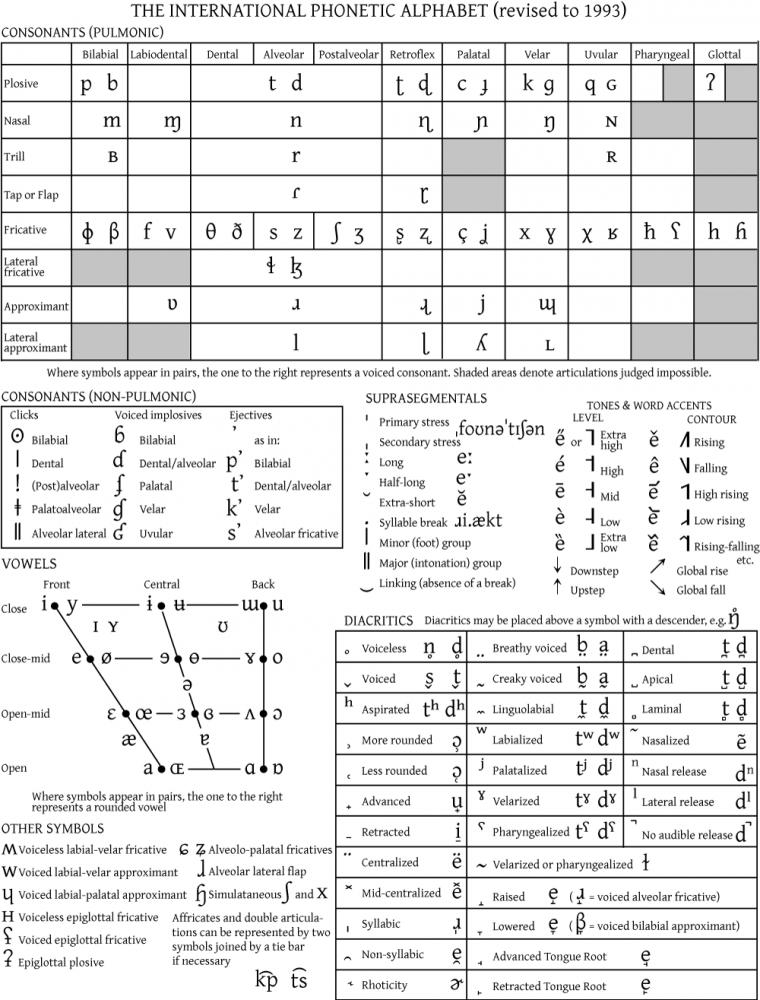0














| Thumbs Up |
| Received: 94 Given: 0 |

The International Phonetic Alphabet
SourceThe International Phonetic Alphabet (IPA) is a system of phonetic notation based on the Latin alphabet, devised by the International Phonetic Association as a standardized representation of the sounds of spoken language. The IPA is used by foreign language students and teachers, linguists, speech pathologists and therapists, singers, actors, lexicographers, and translators.
The IPA is designed to represent only those qualities of speech that are distinctive in spoken language: phonemes, intonation, and the separation of words and syllables. To represent additional qualities of speech such as tooth gnashing, lisping, and sounds made with a cleft palate, an extended set of symbols called the Extensions to the IPA is used.
Occasionally symbols are added, removed, or modified by the International Phonetic Association. As of 2008, there are 107 distinct letters, 52 diacritics, and four prosody marks in the IPA proper.
IPA can be a very valuable tool in language learning. When I was first studying Chinese, we initially used IPA to write our phonemes. It was that, in tandem with listening to native speakers, that enabled us to get an accurate picture of the sounds of Chinese into our heads. The great thing about IPA is that once you understand what sounds the symbols make (which can be done by reading something in your dialect written in IPA), you can pronounce the sounds of any other language on Earth transcribed into IPA.
So, to start here is an IPA chart for nine English dialects. Additionally, here is the master-key chart:
















| Thumbs Up |
| Received: 13 Given: 0 |

I wonder if I am the only one who pursued a Ph.D. in this, well more specifically linguistics and historical reconstruction. I also taught sound recognition and production at university and we used the IPA, of course.
Transcription can be broad and just give the phonemes, or narrow and hug the phonetic ground quite closely. The chart of English dialects pointed to by Psycho, is quite broad. To get narrower transcriptions of vowel, reference must be made to a vowel trapezoid.
The IPA cannot effectively be used to represent tooth gnashing, which is not part of any natural language. However, speech pathologists can use it to describe lisping or shibilants (which may occur with cleft palates) or other forms of speech defects that occur within natural language.
Angantyr may cause vomiting, diarrhea, blindness or violent mood swings. Contact your doctor to see if Angantyr is right for you. Angantyr has not been tested on pregnant or lactating women. Angantyr is not for children.
There are currently 1 users browsing this thread. (0 members and 1 guests)
Bookmarks